#"Tudors"
Explore tagged Tumblr posts
Text
A BOOK ON PLANTAGENET QUEENS-BUT WHERE IS ANNE?
A review of Plantagenet Queens and Consorts by Steven J. Corvi I am always partial to a good book on medieval English Queens. History being what it is, these women often get overlooked and sidelined unless they did something that was, usually, regarded as greedy, grasping or immoral. Therefore when I saw Steven J. Corvi’s book ‘Plantagenet Queens and Consorts’ I thought that sounded right up…
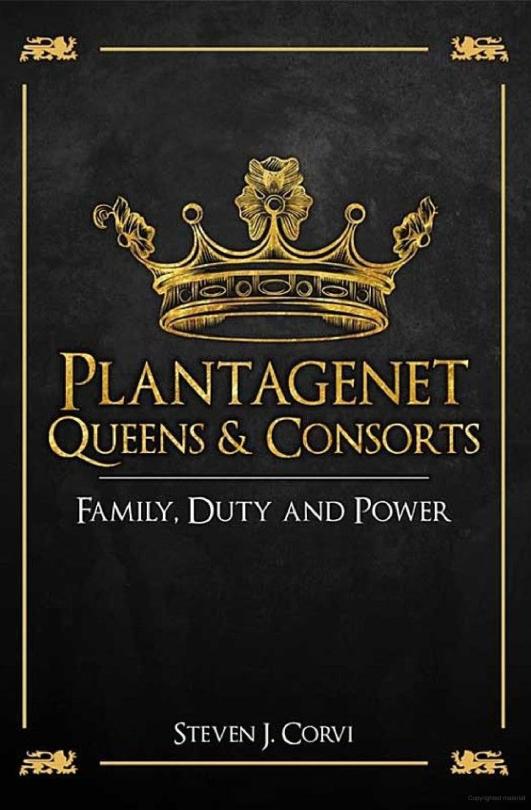
View On WordPress
#"Beauforts"#"Lambert Simnel"#"Tudor" rebellions#"Tudors"#Anne Neville#Anne of Bohemia#Bermondsey Abbey#Eleanor of Aquitaine#Eleanor of Castile#Eleanor of Provence#Elizabeth of York#Henry III#Henry VII#House of York#Joan of Kent#Joan of Navarre#John of Gaunt#Katherine de Roet#Lady Eleanor Talbot#Marguerite of France#Plantagenet Queens and Consorts#pre-contract#Richard II#Richard III
2 notes
·
View notes
Text

TUDORWEEK2024: Day 2 - Favourite Tudor contemporary quote about or said by the Tudor family
“There is a strong idea in the world that a woman cannot live unless she is married, or at all events that if she refrains from marriage she does so for some bad reason… But what can we do ? We cannot cover everybody’s mouth, but must content ourselves with doing our duty and trust in God, for the truth will at last be made manifest. He knows my heart, which is very different from what people think, as you will see some day.”
Elizabeth I of England to Spanish ambassador Diego Guzmán de Silva, 24 March 1565.
#dailytudors#tudorweek2024#one of my favourite quotes to be precise#Elizabeth I#Elizabeth I of Engand#Elizabeth Tudor
96 notes
·
View notes
Text
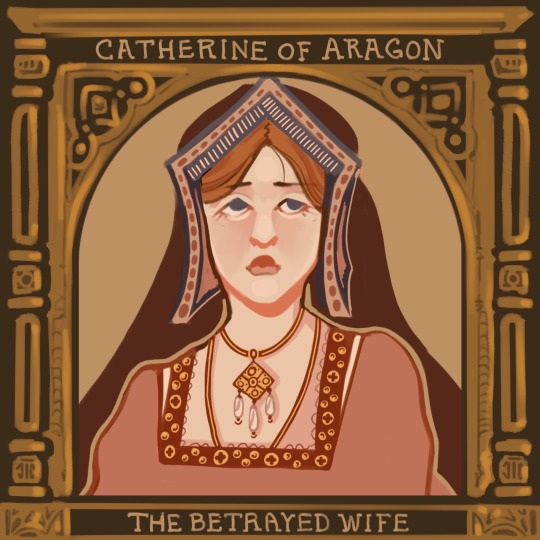
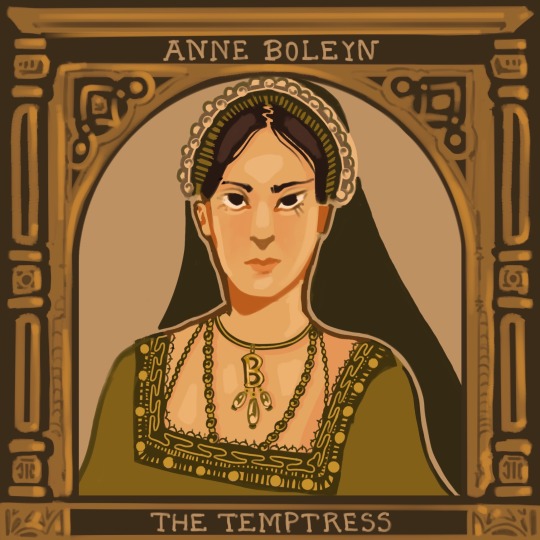


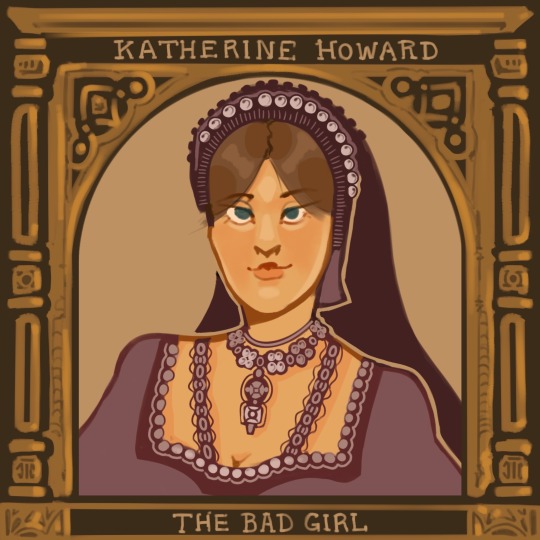
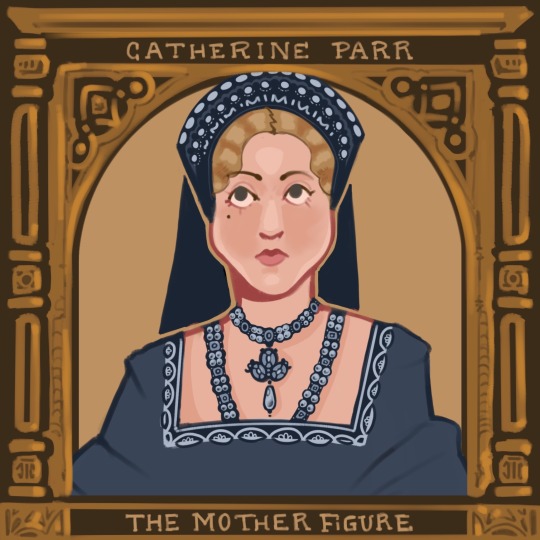
1. Catherine of Aragon (married 1509-1533)
motto: HUMBLE AND LOYAL
Even allowing for tactful hyperbole, it is clear that Catherine, […] did have the kind of youthful prettiness and freshness of appearance that charmed observers, not only the family into which she would marry. It was partly a question of her complexion: her naturally pink cheeks and white skin were much admired in an age when make-up was clumsy in execution, easy to detect and much scorned. Ambassadors abroad, describing princesses to their masters, generally emphasized the tint of the skin, carefully noting whether it was 'painted' or not. A fair complexion like Catherine's was thought to indicate a more serene and cheerful temperament than a 'brown' one. Then Catherine's hair was also fair and thick, with a reddish-gold tint, her features neat and regular in a pleasingly shaped oval face.
Perhaps Catherine's fair colouring, so far from the conventional picture of a dark-visaged Spaniard, reminded onlookers of her one-eighth of English blood: […] 'there is nothing wanting in her that the most beautiful girl should have. '
If her complexion was her chief beauty, Catherine's chief disadvantage was her lack of height. All the grace of her bearing, inculcated over many years at the Castilian court, could not conceal the fact that she was extremely short, even tiny. Years later a loyal defender had to admit that she was 'in stature somewhat mean', while adding quickly 'but bonarly [bonnie] withal'. She was also on the plump side - but then a pleasant roundness in youth was considered to be desirable at this period, a pointer to future fertility. In contrast Catherine's voice was surprisingly low and 'big-sounding' for a woman; and that no doubt contributed to the impression of gracious dignity she left on all observers, making up for the lack of inches.
2. Anne Boleyn (married 1533-1536)
motto: THE MOST HAPPY
Anne Boleyn was not a great beauty. The Venetian ambassador […] pronounced her 'not one of the handsomest women in the world'. […] Anne Boleyn was only moderately pretty.
Some of this lukewarm praise may have been due to the fact that her looks did not accord with the fair-haired, blue-eyed ideal of the time. In theory, dark looks were regarded with suspicion and Anne Boleyn's looks were conspicuously dark: she was 'Brunet' […] Anne Boleyn's olive complexion’ […] her colouring 'rather dark' or sallow 'as if troubled with jaundice', or 'not so whitely as ... above all we may esteem.' She did have a few moles, although she was hardly disfigured by them on the contrary they acted as beauty-spots. Her hair, thick and lustrous as it might be, was extremely dark […] And her eyes were so dark as to be almost black. But then the theory of public admiration was one thing - blondes were supposed to be of cheerful temperament - and the practice of physical attraction was quite another. Clearly in adulthood Anne Boleyn exercised a kind of sexual fascination over most men who met her; whether it aroused desire or hostility, the fascination was there.
The black eyes were sparkling and expressive; and they were set off by those 'dark, silky and well-marked eyebrows' […] on the subject: she knew well how 'to use [her eyes] with effect', whether deliberately leaving them in repose or using them to send a silent message which carried ‘the secret testimony of the heart'. As a result many became obedient to their power. More prosaically, the Venetian ambassador called her eyes "black and beautiful'. Her mouth, described by him as 'wide' (another theoretical disadvantage by the standards of the time), was recorded by Sander as pretty. […] Anne Boleyn was 'of middling stature' (which made her of course a great deal taller than Queen Catherine). She seems to have been quite slight or at any rate not full-breasted - the Venetian ambassador remarked that her bosom was 'not much raised' […]. But a much more important aspect of her appearance when she first came to court was her elegant long neck; this, with the deportment she had learned in France […] gave her a special grace, especially when dancing, which no one denied.
The fresh young damsel had other qualities, some more obvious than others at the moment of her arrival back in England. She had 'a very good wit', wrote Cavendish in his Life of Wolsey, another source not prejudiced in Anne Boleyn's favour? The phrase, going beyond mere intelligence, carried with it connotations of spirit and adventurousness; in other words, Anne Boleyn was good company. Like many spirited people, she had another more impatient side to her: she would display on occasion a quick temper and a sharp tongue. But of these characteristics, deplored in a woman as much as skill at singing and dancing was prized, there was as yet no sign.
3. Jane Seymour (married 1536-1537)
motto: BOUND TO OBEY AND SERVE
From other sources, it seems likely that the charm of her character considerably outweighed the charm of her appearance: […] of middle statute and no great beauty. Her most distinctive aspect was her famously pure white complexion. Holbein gives her a long nose, and firm mouth, with the lips slighty compressed, although her face son a pleasing oval shape with the high forehead then admired (enhanced sometimes by discret plucking of the hairline) and set off by the headdresses of the time. Altogether, if Anne
Boleyn conveys the fascination of the new, there is a dignified but slightly stolid look to Jane Seymour, appropriately reminiscent of English medieval consorts.
But the predominant impression given by her portrait - at the hands of a master of artistic realism - is a young woman of calm good sense. And contemporaries all commented on Jane Seymour's intelligence: in this she was clearly more like her cautious brother Edward than her dashing brother Tom. She was also naturally sweet-natured (no angry words or tantrums here) and virtuous - her virtue was another topic on which there was general agreement. There was a story that she had been attached to the son of Sir Robert and Lady Dormer, a country neighbour, but was thought of too modest a rank to marry him; even if true, the tale brought with it no slur on Jane's maidenly honour. It was told more as a Cinderella story, where the unfairly slighted girl would go on to be raised triumphantly to far greater heights. Her survival as a lady-in-waiting to two Queens at the Tudor court still with a spotless reputation may indeed be seen as a testament to both Jane Seymour's salient characteristics - virtue and common good sense. A Bessie Blount or Madge Shelton might fool around, Anne Boleyn might listen or even accede to the seductive wooings of Lord Percy: but Jane Seymour was unquestionably virginal.
In short, Jane Seymour was exactly the kind of female praised by the contemporary handbooks to correct conduct; just as Anne Boleyn had been the sort they warned against. There was certainly no threatening sexuality about her. Nor is it necessary to believe that her 'virtue' was in some way hypocritically assumed, in order to intrigue the King […]. On the contrary, Jane Seymour was simply fulfilling the expectations for a female of her time and class: it was Anne Boleyn who was - or rather who had been - the fascinating outsider.
4. Anne of Cleves (married 1540-1540)
motto: GOD SEND ME WELL TO KEEP
Let us take the actual appearance of Anna of Cleves first: for this we are fortunate in having a first-hand description, written only a few days later by the French ambassador, Charles de Marillac, who was not prejudiced in either direction, towards her beauty or her ugliness. Anna of Cleves looked about thirty, he wrote (she was in fact twenty-four), tall and thin, 'of middling beauty, with a determined and resolute countenance.' The Lady was not as handsome as people had affirmed she was, nor as young […], but there was a steadiness of purpose in her face to counteract her want of beauty.
The 'daughter of Cleves' was solemn, or at any rate by English standards she was, and she looked old for her age. She was solemn because she had not been trained to be anything else and the German fashions did little to give an impression of youthful charm in a court in love as ever with things French, or at any rate associating them with fun and delight. […] Turning to Holbein's picture, one finds this solemnity well captured: a critic might indeed term it stolidity. Besides Wotton, in his report, had confirmed that Holbein, generally regarded as the master of the 'lively' or lifelike (not the flattering) in his own time, had indeed captured Anna's "image' very well.
Of course a beautiful young woman, however stolid or badly dressed, would still have been acceptable. Anna of Cleves was not beautiful, and those reports which declared she was were egregious exaggerations in the interests of diplomats […]. But was Anna of Cleves actually hideous? Holbein, painting her full-face, as was the custom, does not make her so to the modern eye, with her high forehead, wide-apart, heavy-lidded eyes and pointed chin.
There is indirect evidence that Anna of Cleves was perfectly pleasant-looking from the later years of Henry VIII. When Chapuys reported Anna of Cleves as rating her contemporary, Catherine Parr, 'not nearly as beautiful' as herself, this expert observer did not choose to contradict her; so that the boast was presumably true, or at least true enough not to be ridiculous.
5. Katherine Howard (married 1540-1542)
motto: NO OTHER WILL BUT HIS
No confirmed authentic picture of Katherine Howard survives. The fact that Katherine Howard is the only one of Henry VIII’s wives for whose appearance we must rely properly on contemporary descriptions, gives her career an appropriately evanescent quality. The same mistiness surrounds her date of birth. She was eighteen or nineteen when the King’s roving eye first fell upon her: that is, roughly thirty years younger than he was. […] Katherine was not only small, as Catherine of Aragon had been, but diminutive: parvissima puella – a really tiny girl. If King Henry was about thirty years older than Katherine, he must have been well over a foot taller. We need not speculate further about their respective weights. The French ambassador rated her beauty as only middling (the same phrase he had used for Anna of Cleves, incidentally), but he did praise her gracefulness, and he found much sweetness in her expression; her habit of dressing à la française (as opposed to Anna of Cleves’ Germanic fashions) no doubt commended itself to him.
Even if Katherine Howard was not a beauty, she must have had considerable prettiness and obvious sex appeal (as well as – or perhaps because of – her youth) since we know that she captivated the King instantly.
6. Catherine Parr (married 1543-1547)
motto: TO BE USEFUL IN ALL I DO
The woman who brought about this cheerfulness, the new Queen Catherine Parr, was herself never described by anyone as a beauty: even the term ‘of middling beauty’ used for both Anna of Cleves and Jane Seymour by Marillac was not applied in this case. ‘Pleasing’ and ‘lively’, ‘kind’ and ‘gracious’ were the most flattering epithets ascribed to her. It is true that a difference of age and status may have been responsible for this lack – widows of over thirty were not expected to be beauties – but when Anna of Cleves indignantly exclaimed that the new Queen was ‘not nearly as beautiful as she’, Chapuys, passing on the comment, did not see fit to contradict it.
Queen Catherine Parr’s only known authentic likeness, attributed to William Scrots, shows an amiable face rather than an intriguing one; the nose is short, the mouth small, and the forehead broad rather than domed in the way that contemporaries admired. Her hair was rather similar in colour to that of Catherine of Aragon: light auburn, tinged with what Agnes Strickland in the nineteenth century would call ‘threads of burnished gold’.
But if the new Queen Catherine was not a beauty, she was neither dull nor austere. She enjoyed dancing. […] She was well set up – the tallest of King Henry’s wives – and her height would have enabled her to cut a regal figure since her conception of her role as queen consort also included a great deal of ornate dressing-up.
Bibliography:
- Fraser, Antonia. The Six Wives of Henry VIII. New York Knopf, 1993.
#henry viii#princess catherine#catherine of aragon#anne boleyn#queen anne#jane seymour#anne of cleves#katherine howard#catherine parr#procreateart#digitaldraw#digitalillustration#renaissance#medieval#english history#monarchy#the tudors#king henry viii#quotes#illustration#england
257 notes
·
View notes
Text

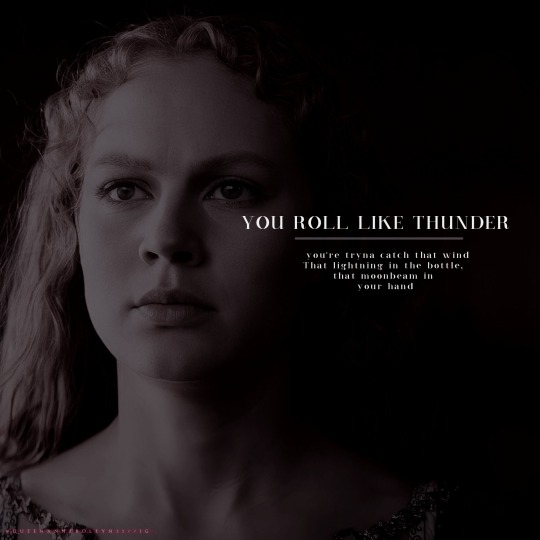
"She was, in the brief time allowed her, a good mother, incurring her husband’s displeasure by insisting on breastfeeding Elizabeth herself, which high-born mothers never did, and choosing pretty clothes for the child. She rarely saw her, however, for the Princess was given her own household at Hatfield House at three months old, and thereafter her mother could only visit when her other duties permitted."
#anne boleyn#perioddramaedit#the tudors#quotes#lyrics#history#thetudorsedit#elizabeth i#elizabeth tudor#becomingelizabethedit#becoming elizabeth#alicia von rittberg#beedit#tudorsedit#anneboleynedit#natalie dormer#alison weir#16th century#lana del rey#lyricsedit#thunder#queen anne boleyn#queen elizabeth i of england#perioddramasource#periodedit#women in history#women of history#tudor history#tudor dynasty#tudorerasource
255 notes
·
View notes
Text
random My Lady Jane quotes that live rent free in my mind
youtube
#my lady jane#save my lady jane#myladyjanecentral#myladyjaneedit#mljedit#janefordarchive#my lady jane humor#my lady jane video#videos in the palace#edits in the palace#jane x guildford#janeford#jane grey#guildford dudley#susannah#lord dudley#lord seymour#margaret grey#edward tudor#fitz#katherine grey#petunia#frances grey#stan dudley#my lady jane compilation#Youtube#tried editing in some stuff that I think is funny (I know I am not funny haha)#had to include bry at the beginning :)#I threw in an oona quote from odd squad just bc I can see if you can spot it haha
83 notes
·
View notes
Text
When he thinks about her (and about kissing her) embarrassingly often!!!

#lines from:#my lady jane#edward tudor#quotes#my lady janies#cynthia hand#brodi ashton#jodi meadows#ofc.#it reminded me of#cardan greenbriar#jurdan#tfota#holly black#small parallels#tfota parallels
56 notes
·
View notes
Text
Elizabeth I: Welcome to the “Fuck Philip II Club.” Where we all go and say a collective “fuck you” to Philip II.
Mary I:…It appears I’ve greatly misinterpreted the purpose of this club.
#philip ii of spain#philip ii#mary i#incorrect quotes#mary i of england#mary tudor#felipe ii#Elizabeth I#Elizabeth I of England#elizabeth tudor#I’ve seen this incorrect quote floating around#I think I got it wrong but eh
33 notes
·
View notes
Text






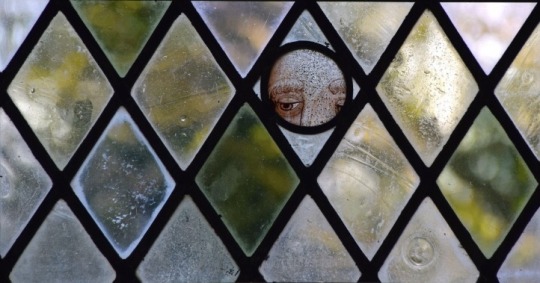

















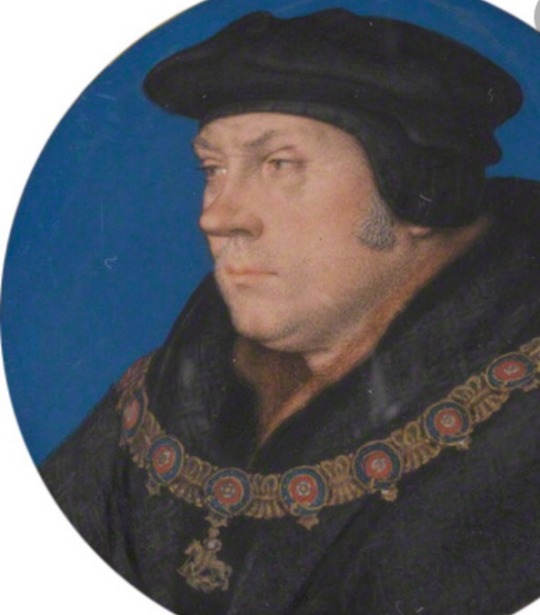

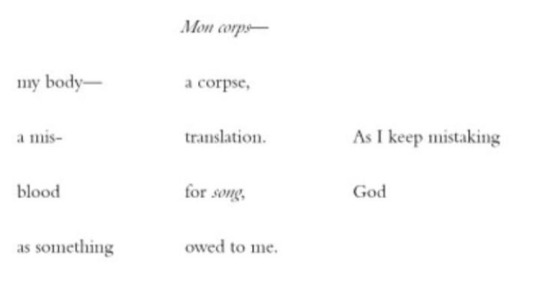

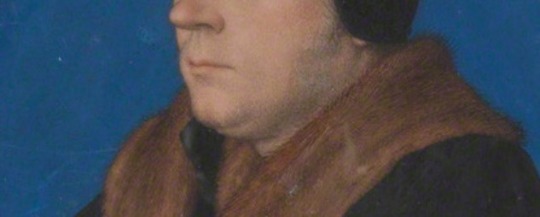

Description of the primary documents:
Image 9/document 1:
a book of hours. Thomas Becket's name is erased from the calendar of saint's days
Image 10/document 2:
Cromwell's arms in the book of heralds after his fall. 'X's show where they've been crossed out
Image 21/document 3:
'questions to be axid of thomas cromell'
in henry viii's hand, the heading to a list of questions regarding the Cleves marriage
Image 26/document 4:
Cromwell's letter to the king from the tower
Image 28/document 5:
His parliamentary attainder
#this is well ugly. but we move!#I don’t foresee the ‘you can choke’ being well-received. but it’s in specific reference to his ‘low birth’ and how flagrant he was#about it and how little he seemed to have cared?#I got way too carried away w this#and thus continues my doing quote boards for Thee most unpopular Tudor figures#I did one of Henry and ngl I’m tempted to do another#(when I say unpopular. that’s like. within reason. as in I’m not gonna be out here doing one for thomas seymour. or richard riche. ya ken?)#also this was a bit annoying to make because the fucker sat in the same position. facing the same direction. in the same outfit#with the same expression. in every portrait of him ever#which does not lend itself well to this sort of thing#(altho actually tbf i do think he has a softer? expression in the miniatures than in the main Holbein portrait)#also on the real that medal is incredibly well made. they even managed to do some wee curls poking out from under the hat#to get that kinda detail with just hand tools...#phew#also cowboy carter is a banging album and if you havent listened to it you should#thomas cromwell#the tudors#wolf hall#also i did put one positive/happier quote in there because well. outside of wolf hall i dont think people do know as much about#the good things he did and tried to do#he's incredibly complex to put it mildly
30 notes
·
View notes
Text
The phrase "Truth, the daughter of time" is a pretty poetic one, especially when you consider how Mary I of England is being looked at today. For centuries, she’s mostly been remembered as "Bloody Mary," painted as a cruel and cold-hearted figure. But now, scholars are revisiting her story and giving her a more accurate and positive review.
#mary i of england#mary tudor#also her quote followers are mostly people of color or queer#and Catholics of course#like she’s the reason why I became catholic again#mary i#the tudors#happy birthday#to her
23 notes
·
View notes
Text
HENRY VI'S STATUE IN COVENTRY
A modern 3-D printed statue of Henry VI is soon going to grace the streets of Coventry. The original, made in the 1500’s, is housed in the Herbert Art Gallery. The local council wanted to use the Tudor era statue in the rebuild of Coventry Cross but it was deemed too fragile to withstand outdoor weather, hence an exact copy was decided upon instead. The cross and statue should be in place…

View On WordPress
#"Tudors"#Christ#Civil War#Coventry Cross.#Edward IV#Henry III#Henry Peyto#Henry VI#Herbert Art Gallery#Lady Godiva#Parliament of DevilsMargaret of Anjou#Richard III#Sir William Hollies#St. Thomas Becket#statues#The Crown Jewels
1 note
·
View note
Text

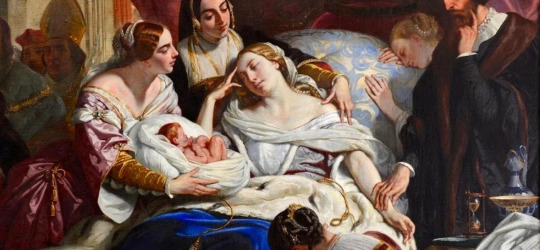
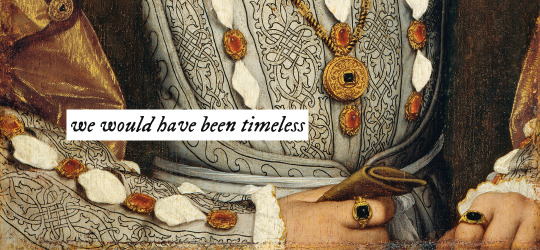
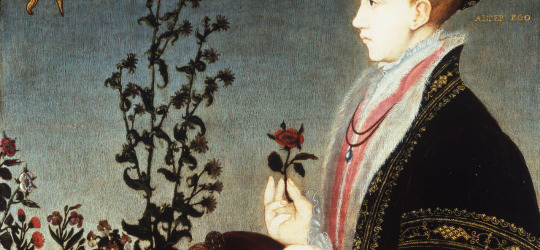
“In death, Jane became the ultimate consort; unblemished (especially in the eyes of her capricious and tyrannical husband), ever young, and the mother of a surviving son. Instead of merely being the wife who ‘died’ and in recognition of her saint-like life — which went beyond the medieval ideal of saintly queenship — Jane should actually be remembered as the wife who was (effectively) canonised.”
Aidan Norrie, ‘Jane Seymour: Saintly Queen’, Tudor and Stuart Consorts: Power, Influence, and Dynasty (Queenship and Power)
#jane seymour#henry viii#tudor history#edward vi#shoutout to machiavellianjane for posting the quote originally!#history#queen jane seymour#lyric cred is timeless by taylor swift ... obviously
235 notes
·
View notes
Text
Cathy: What's your favorite trope?
Elizabeth: Obviously it's enemies to lovers.
Mary: That's a basic fucking bitch answer, Lizzie
Elizabeth: Alright you want a real answer, Mary?
Mary: Yes!
Elizabeth: When my mom was trying to get our dad's attention which resulted in my mom sharing a bed with your mom. Resulting in uncomfortable tension and a rivalry for our father’s affections. But they realized they loved each other and would have dumped dad if he wasn't the king resulting in the first divorce beheaded lines.
Catalina + Anne:
Anne: …I raised you right but…
Catalina: That’s oddly weird and specific that you know all that…
Jane: *turning her chair away from the others sipping her tea*
(Probably the turning point of me liking enemies to lovers.)
#six the musical#six the musical incorrect quotes#six the memecal#incorrect six quotes#araelyn#araleyn#slight araleyn#anne boleyn#catherine of aragon#jane seymour#catherine parr#mary tudor#elizabeth tudor
77 notes
·
View notes
Text
Each queen in SIX as a John Mulaney quote
Catherine of Aragon: I was raised Catholic, I don't know if you could tell that from everything about me
Anne Bolyne: eat ass, suck a dick, and sell drugs
Jane Seymour: shut up you're all gonna die
Anna of Cleves: some people give off a vibe of, right away, they're like "do NOT fuck with me"
Katherine Howard: I'm so horny and angry all the time and have no outlet for it
Catherine Parr: I'll keep all my emotions right here, then one day I'll die
15 notes
·
View notes
Text
Tullus Aufidius to Gaius Marcius Coriolanus, from Shakespeare's Coriolanus (1608):
"O CORIOLANUS, CORIOLANUS!
Each word thou hast spoke hath weeded from my heart
A root of ancient envy. If Jupiter
Should from yond cloud speak divine things,
And say 'Tis true,' I'ld not believe them more
Than thee, all noble CORIOLANUS. Let me twine
Mine arms about that body, where against
My grained ash an hundred times hath broke
And scarr'd the moon with splinters: here I clip
The anvil of my sword, and do contest
As hotly and as nobly with thy love
As ever in ambitious strength I did
Contend against thy valour. Know thou first,
I loved the maid I married; never man
Sigh'd truer breath; but that I see thee here,
Thou noble thing! more dances my rapt heart
Than when I first my wedded mistress saw
Bestride my threshold. Why, thou Mars! I tell thee,
We have a power on foot; and I had purpose
Once more to hew thy target from thy brawn,
Or lose mine arm fort: thou hast beat me out
Twelve several times, and I have nightly since
Dreamt of encounters 'twixt thyself and me;
We have been down together in my sleep,
Unbuckling helms, fisting each other's throat,
And waked half dead with nothing."
#coriolanus#shakespeare#17th century#1600s#tullus aufidius#gaius marcius coriolanus#play#elizabethan#tudor#theatre#drama#lines#lgbt#lgbtq#queer#gay#gay literature#aufidius x coriolanus#quotes#shakespearean#william shakespeare
32 notes
·
View notes
Text

Jardin aux lilas, a ballet by Antony Tudor for his short-lived Dance Theatre company, 1938. Photo by Angus McBean.
"It was Antony Tudor who first put his women in long dresses, the Edwardian dresses his mother wore. The effect was startling and a real shock to the imagination. The audience was called upon to accept the balletic gesture as a form of simple dramatic communication. It was also asked to watch women who looked like their mothers and aunts kicking over their heads or wrapping their legs around men’s bodies." — Agnes de Mille
#jardin aux lilas#hugh laing#agnes de mille#antony tudor#peggy van praagh#angus mcbean#ballet#1930s#quote
25 notes
·
View notes
Text
"But Kavita Mudan Finn has shown that while fifteenth and sixteenth century authors admired Elizabeth's virtue, being a 'good' girl limited her literary potential compared to the 'traitor' Margaret of Anjou and 'adulteress' Elizabeth Woodville, who allowed for more risqué representation and didactic moralizing. Writers lauded Elizabeth of York for uniting Lancaster and York, and they sometimes portrayed her as a virgin martyr in accounts where Richard III tried to force her into wedlock. But otherwise, legitimizing Henry undercut her status by subordinating her to him, and in literary sources she rarely appears following their marriage. In William Shakespeare's works, she practically disappears."
william b. robison, "the sexualization of a 'noble and vertuous quene': elizabeth of york, 1466-1503."
#elizabeth of york#elizabeth woodville#margaret of anjou#henry vii#richard iii#lancaster#york#history#house of tudor#tudor dynasty#tudor era#tudor period#women's history#royal history#english history#early modern history#*quotes
32 notes
·
View notes